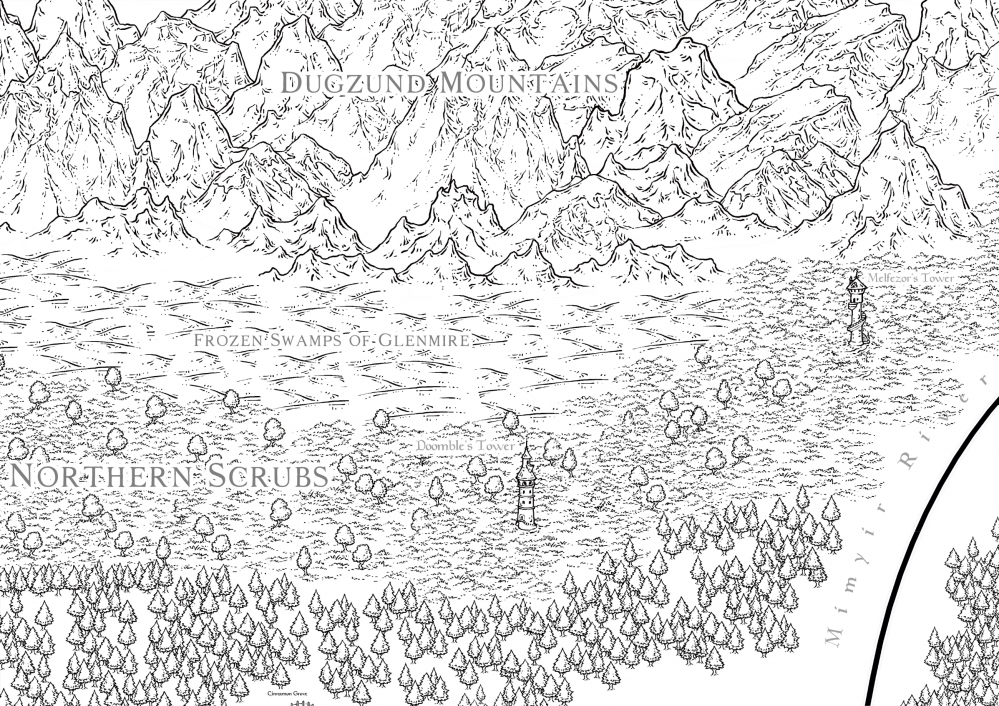
Vigilant RPG
The Rogue Archetype & Skill Trees
Archetype Overview
The Rogue is built to be the most flexible archetype – both inside and outside of combat. A rogue can build to specialize in numerous different areas, and their larger volume of skill points allow them to cover a range of specialties that other archetypes would struggle to keep up with. The innate archetype ability – roguishness – allows the rogue to treat physical or mental dice as either type when taking actions, so despite the archetype having the smallest dice pools they are able to take both mental and physical actions with comparable effectiveness to the spellcaster and fighter who have the most dice in either base pool respectively. As a newer player this makes them the easiest archetypes to play as it removes the mental burden of managing dice pools. Experienced players can find hidden layers of complexity within the rogue’s ability to manipulate their dice pools more efficiently than any other archetypes as by doing so a player can take advantage of numerous perks, items, and abilities that care about dice remaining in either pool.
Rogues also gain more skill points than any other archetype, which is from where they derive most of their out-of-combat flexibility in combination with supporting perks. As mentioned previously, there are only 18 skills in Vigilant, with each skill covering a broad range of applications. Bonuses to skills from ranks cap out at +10, and have diminishing returns based on the number of ranks invested, representing the natural plateau people reach in the pursuit of mastery, and the difficulty and investment required to break through such. It requires 21 ranks to obtain the full +10 bonus. The fighter and Priest only receive a grand total of 20 skill points from their progression, and cannot even obtain the maximum bonus even if they dumped all their points into a skill. Spellcasters on the other hand share their skill points between spells and skills, so although they get a total of 28 points to spend on skills, doing so would limit their ability to cast spells substantially. Rogues on the other hand receive a whopping 35 skill points by level 10, and therefore can specialize aggressively, or even spec into every single skill available with points to spare. Skill flexibility is meant to be one of the defining features of the rogue archetype, and it is expressed primarily through the volume of points available. Although many of the skill trees reinforce the Rogue as a reflex-based archetype, Rogues who emphasize a nontraditional attribute can still be very effective within the archetype should they choose to specialize in skills which take advantage of another bonus.
Skill Trees
Above are the four trees available within the rogue archetype! The assassin and burglar are the combat and noncombat trees respectively which contain abilities commonly found within classic TTRPG rogue progressions such as sneak attacks, lightning fast reflexes, and bonuses to hiding and pickpocketing. Taking a combination of perks from both trees will give you a character who is very comparable in playstyle to rogues from DnD and Pathfinder, whereas specializing in a specific tree will reward a character with powerful abilities at the expense of some flexibility.
A quick note on progression: although there is a ‘soft cap’ of level 10 within Vigilant, characters can continue to progress past level 10, but in doing so only receive a perk and skill points, and do not continue to increase Hit Points, Attributes or dice pools. The burglar tree is deliberately long to give a player plenty of options, and to represent a myriad of fantastical depictions of burglary from the skilled fence, to the acrobat, or a master of stealth. An extremely high level character can finish off an entire tree, but at early levels they will have to specialize – and this is indeed intended.
The investigator is meant to represent an occult investigator, or a Holmes-esque detective and is my personal favorite tree, as I find it leads to some fun gameplay. Mulled is my favorite perk in the entire game; it is not particularly powerful by any means, but it is a load of fun when a party makes there way out of the dungeon to rest and recover only for the investigator to realize in the midst of their rest that they missed a crucial detail such as a secret door, or that the prisoner they rescued was lying! and suddenly the party is forced into a situation where they have to fight their way back through a partially-cleared dungeon to uncover a missed secret. As a GM I personally love when my party backtracks, as it gives you a bunch of opportunities to show how the passage of time has impacted familiar areas. If a party has left a dungeon in ruins maybe areas are now collapsed and inaccessible, maybe the dungeon ecology has changed and new creatures have moved in, maybe the players take advantage of their foreknowledge and come back better prepared to tackle specific environmental challenges, opening up new ways to approach encounters. It’s usually a blast to run through old dungeons, and the very first perk in the tree provides plenty of opportunities to do so. ‘Hidden Details’ also allows the GM to cover-up any screw-ups by dropping the investigator the necessary information. Maybe you were expecting the party to investigate a specific area that they completely overlooked, so you tell the investigator about it during their opportunity to reroll, and can get the party back on track. At higher levels the Investigator becomes resistant to minor fear effects and gains a bonus to their mental TN. These are decently powerful effects on their own, but what I’ve found to be fun is player’s tendencies to find roleplaying justifications for their new immunities, such as a dead-inside private investigator, or a Scooby-Doo approach where the investigator believes every monster is a man-in-a-mask until proven otherwise.
The Tactician is one of the more complicated trees in the game, and characterizes the Rogue’s flexibility as leadership ability rather than individual ability. The Command ability allows the rogue to spend dice from either pool at the beginning of a round to add to a separate ‘command pool’ which they may then use to add to other friendly character’s actions or reactions during the round. Characters who go deep in the tree transform into excellent supporting classes, and usually the command pool encourages the rest of the party to take riskier actions, as they have a reserve of dice to fall back on in case things go sideways. It tends to dramatically change the way encounters play out, with parties becoming reliant on the bonus dice and fighting in tighter formations to remain within the Tactician’s buff range. Specializing in this tree reinforces those tendencies by adding some passive buff auras that adds to character’s mental TN and protects against fear.
That’s about it for the Rogue! I’ll cover the Priest and Spellcaster archetypes in future posts. As a reminder the Player’s Guide is now available for free on Itch.io, with the GM-facing rules well on their way for a mid-December drop. If you’re interested in running the game, drop me a message and I can hook you up with some rough-drafts of the Gamemaster Guide and some modules!









































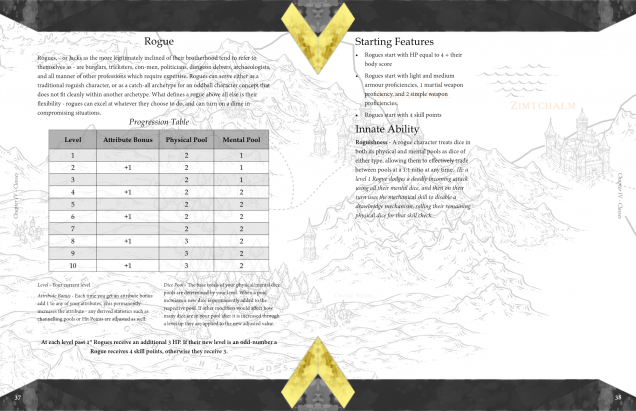
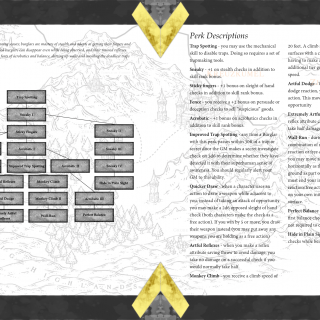
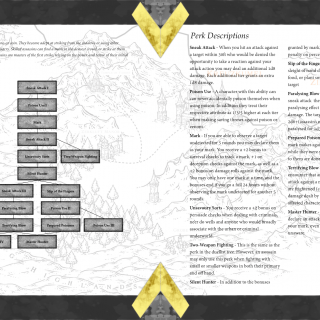
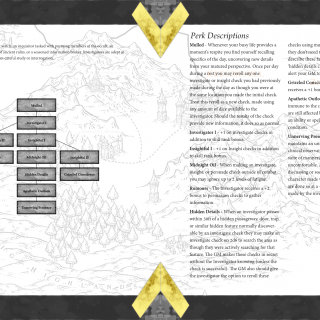
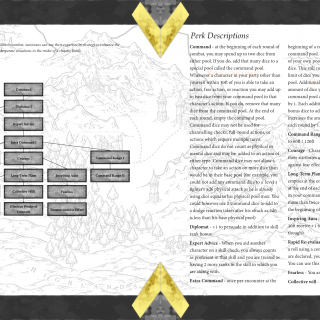

































Leave a Reply